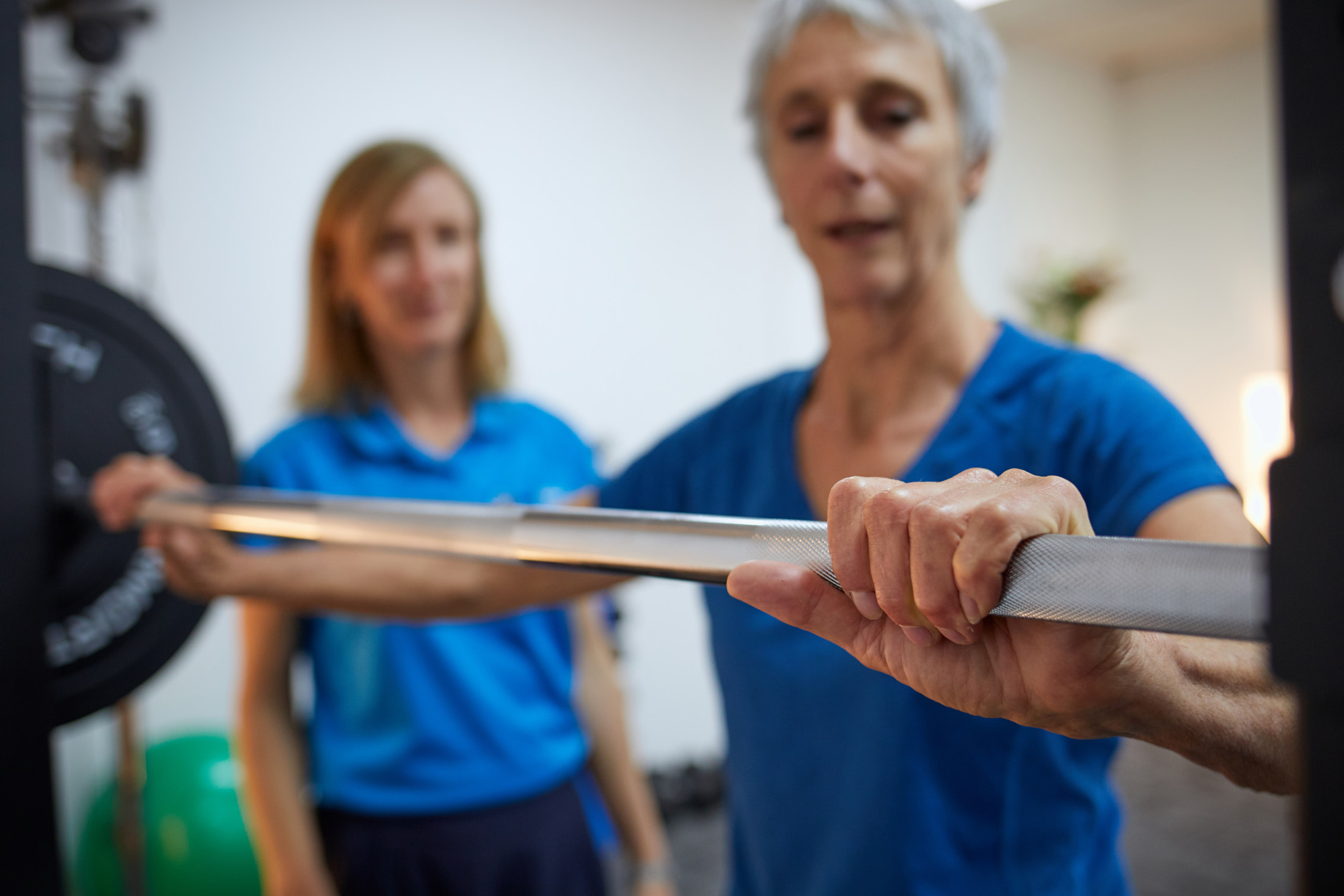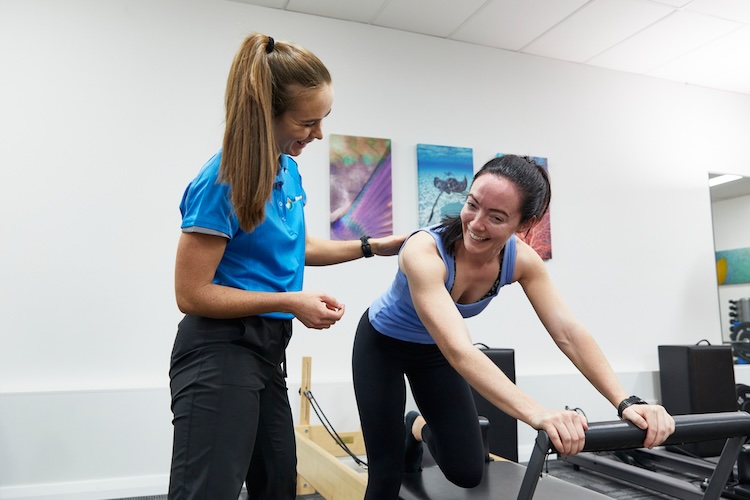Exercise after childbirth
Exercise can help you recover after childbirth, make you stronger and help mental well- being too.
The unique time after childbirth is different for every woman, and even following different pregnancies for the same woman. How soon you’re ready to start exercising depends on your individual circumstances. These suggestions should help you make the right choices in return to exercise for you.
Early days to 6 weeks
In the early days you are recovering from the birth of your baby as well as looking after a newborn.
Go easy on yourself during those first weeks. Getting outside and walking for 10 minutes is better than nothing and even this amount has benefits for building up fitness, relieving stress and raising your energy levels.
Choose an enjoyable route – no big hills for the first few weeks. Take the pram if you must, but if there’s a chance to get out without it, or allow someone else to push it, you can swing your arms freely and get an even better ‘work-out’.
Many women use Recovery shorts. These are particularly helpful if you have a large Rectus Abdominus Diastisis, or you’ve had a pelvic floor problem prior to, or during pregnancy. Wearing recovery shorts or leggings can be comfortable, reassuring and also assist your recovery.
Note – Recovery shorts are available to purchase at Next Wave Therapy
Pelvic Floor Muscle Exercises
A key time to be aware of these muscles is during your pregnancy and as you are recovering.
Being pregnant places a new load on the pelvic floor, and whether you had a vaginal delivery or caesarean delivery, these muscles are important to exercise during pregnancy, and for postnatal recovery.
It can be helpful to get a Real Time Ultrasound check to make sure you are contracting your pelvic floor muscles correctly. This can be performed when pregnant (usually after the 12 week check) or at any stage after having your baby (give yourself a few weeks of settling in to ensure enough recovery of the pelvic floor to see a lift).
In the early postnatal days do not be alarmed if you cannot feel much of a lift in your pelvic floor, or if you cannot hold the pelvic floor lift for as long as you could when you practiced through your pregnancy! Gentle contraction/relaxation of the pelvic floor can help reduce swelling if present and improve blood flow to the area for healing any grazes or tears that may be present.
In the case of a Caesarian section, as soon as your catheter is removed you may start focussing on your pelvic floor muscles also.
How to build up strength and fitness after a baby
Pelvic Floor Exercises
Performing Pelvic Floor exercises daily is number one on your postnatal recovery priority list.
“1 in 3 women who have ever had a baby will wet themselves.”
These muscles are going to be with us for the rest of our lives, through menopause and ageing. The better they recover now, the better for the future you!
How exactly do you do pelvic floor exercises?
No two women will have the same program. Here’s how to determine yours.
Discover how long you can hold your contraction for whilst breathing normally, and still feel a good, and full let go. Let’s say you can hold well for 4 seconds, but if you try to hold for 5 you can’t really feel the let go anymore. Your hold time is currently 4 seconds.
Now see how many of these you can do in a row, with a short break between each contraction. Let’s say you can do 5 lifts of 4 seconds but when you try to do a 6th you find you have to ‘cheat’ and hold your breath, or bring in your abdominal muscles too much. Your repetitions are currently 5.
In this case, your program is 4 second hold x 5 repetitions.
2 mins break. Repeat x 2 sets. Perform 2-3 x a day.
If you are doing the program regularly, you should be able to add 1 second to your hold time every 1-2 weeks. Your goal is 10 x 10 second holds.
Ideally this should be performed in a variety of positions such as lying, side-lying, hands and knees, sitting or standing as long as you can feel a good quality contraction in that position. You should be able to perform your contractions in standing (against gravity) by the time you reach your goal. If not, keep working in that position!
The good news is that once you have achieved this goal, your strength can be maintained by performing your routine just 2 x week. Most women who adhere to this program find it can take about 3 months to reach their goal. This is also when your baby is getting heavier, and you may be wishing to get back to more exercise or activity.
We use real time ultrasound at Next Wave Therapy. This can be helpful to initially get a sense of a pelvic floor contraction and then track how your doing.
Cardio Recovery
Following the WHO guidelines of 150 minutes of moderate intensity exercise per week (eg walking to get a puff up, but still being able to hold a conversation) is a great goal to aim to get to during those first three months of recovery.
Post Natal Exercise
Exercises that are NOT recommended
It shouldn’t be a surprise to you that jump-squats are out for a recovering pelvic floor! Other perhaps less obvious exercises that are NOT recommended are:
-
wide legged or deep squats
-
planks and abdominal crunches
-
dead lifts
-
lat pull down with heavy weights
-
full push-ups
Recommended Post Natal exercises are:
Performing a simple strengthening program 2-3 x week is ideal. This could include:
-
Seated exercises such as shoulder press, row, bicep curl
-
Shallow and narrow leg squats
-
Wall push up
-
Floor bridge
The Pelvic FloorFirst website has some excellent guidance on this subject.
If you are unsure, or if you need motivation or guidance Next Wave therapists can help design a pelvic floor friendly program for you and your specific needs and/or goals. The full Pilates studio is a truly ideal way to address postnatal recovery.
Women often do so very much for their families and their new babies that their own needs do not get the attention they deserve and need. Carving out time for yourself during this often busy, sometimes chaotic time is so important for your body and mind.
When to increase exercise levels
Once you have put in the work during those early weeks/months, there are a few ‘rules of thumb’ that can help guide you when you wish to increase the intensity of your exercise.
1. Before returning to higher impact exercise (such as jogging, aerobics) you should be able to hold your pelvic floor muscle contraction for 10 seconds x 10 repetitions in a standing position.
2. Before returning to higher impact exercise complete the Pelvic Stress Test (ie. with a full bladder, jump up and down and cough x 5 at the same time). You will know if you have passed. Some women report a feeling of ‘blah’ when performing this test at 12 weeks, or others experience leakage. Both are signs that there is a bit more work to be done before increasing the load on your Pelvic Floor.
3. Consider that the softening effects of the raised Relaxin levels during pregnancy take time to return to normal. Your body is also producing other wonderful hormones if you are breastfeeding. All this means that your connective tissue is not at its strongest until around 6 months after your baby is born, or roughly 3 months after you have finished breastfeeding. Connective tissue suspends and surrounds your pelvic floor. It also surrounds your joints giving them stability.
You should be working on balance and muscle strength as outlined above if you are dead keen to get back to running or other higher impact exercise to avoid unnecessary injuries to the pelvic floor, and even joints.
And of course, slowly build up your running or other high impact exercise to allow your body to adapt to the new loads you are placing on it!
Good Luck!
Copyright © Next Wave Therapy







